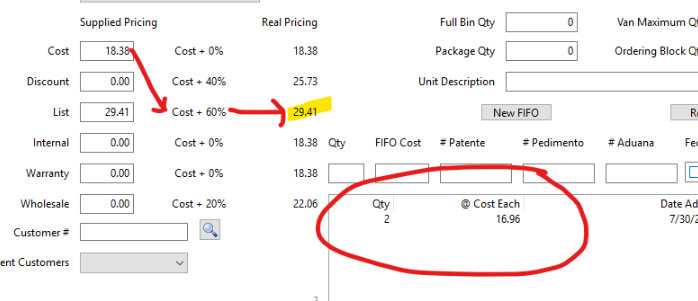When pricing is set to cost +%, you may expect the gross profit to match the markup percentage used, but there are actually two very different calculations used for this analysis.
For an easy example, let's say we have a part that costs $100 and the markup is 35% so we sell it for $135. That markup is 35%.
When we sell the part, our revenue is $135 and our cost is $100.
Gross profit on that sale is calculated by dividing your gross profit by your revenue. This is the universal calculation for GP percentages.
In this example, this would be 35 for your gross profit, divided by 135 for your revenue. This equals the 25.9% rather than the 35% you have set as the markup.
Furthermore, if your organization is using FIFO costing, the true cost of the part is not the cost used to calculate the margins, and therefore the markup % may vary.
FIFO costing means the part record cost is taking the newest parts cost available for the order. This is set up in parts setup under warehouses with the FIFO checkbox.
As an example, let's assume we have a hood spring. The part record is set up with cost of 18.38. The price calculation for that with a 60% markup would be 29.41 (18.38 X 1.6)
In the parts record, however, you can see in the FIFO receiving record that you last paid 16.96 for this part when you received them in; the list price is still calculated off the part calculated cost of 18.38.
So, if you calculate the margin against the 16.96, you get the 73.41 markup that will be shown as the markup on the sales document, despite the markup being set to "cost + 60%" in the part record.
The markup is calculated as the sell price divided by the (true) cost of the part.
It will only come out to a markup of 60% when you last received the part at the exact same cost that is listed on the part record.
Was this article helpful?
That’s Great!
Thank you for your feedback
Sorry! We couldn't be helpful
Thank you for your feedback
Feedback sent
We appreciate your effort and will try to fix the article

